Chinese Pistache Tree
- June 16, 2023
- 0 comment

Common Name: Chinese Pistache Tree
Botanical Name: Pistacia chinensis
Family: Anacardiaceae
Plant Type: Deciduous tree
If you’re searching for a captivating addition to your landscape, look no further than the Chinese Pistache tree. With its stunning autumn foliage, resilience, and a host of other desirable qualities, this tree has gained popularity among gardeners and nature enthusiasts alike.
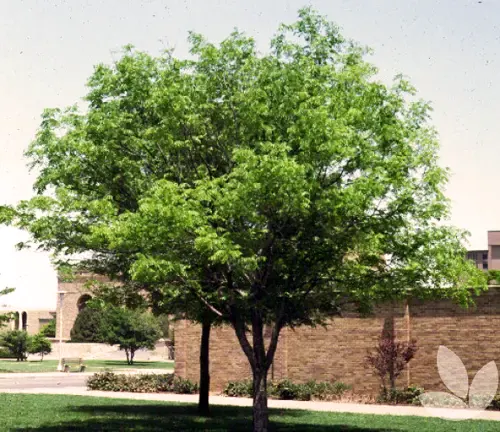
Mature Size and Growth Rate
Chinese Pistache trees typically reach a height of 25-40 feet (7.6-12 meters) and spread 25-35 feet (7.6-10.7 meters) wide, forming a rounded canopy. Regarding growth rate, they are considered moderate, adding about 13-24 inches (33-61 cm) per year.

Soil Type
Chinese Pistache trees are adaptable to a variety of soil types, including clay, loam, and sandy soils. However, they prefer well-draining soil to prevent waterlogging and root rot.
Soil Preference
While these trees can tolerate a wide range of soil pH, they thrive in slightly acidic to slightly alkaline soil, with a pH between 6.0 and 7.5.
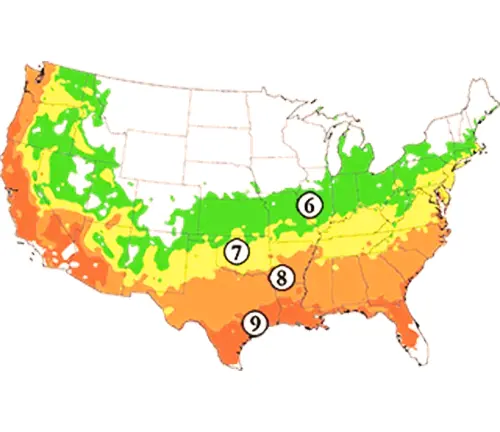
Hardiness Zones
Chinese Pistache trees are well-suited for USDA hardiness zones 6 to 9. They can tolerate both hot summers and cold winters, making them versatile for a range of climates.

Sun Preference
These trees prefer full sun, meaning they require at least six hours of direct sunlight per day. However, they can tolerate partial shade, especially in hotter regions.
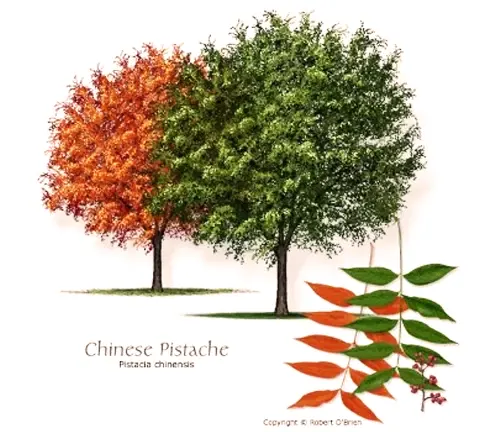
Attributes and Characteristics
Chinese Pistache trees are prized for their exceptional fall foliage. In autumn, their glossy green leaves transform into a stunning display of vibrant red, orange, and yellow hues, adding a burst of color to any landscape. In spring, they produce small, inconspicuous flowers followed by clusters of reddish-brown fruit.
Wildlife Value
Chinese Pistache trees are a valuable resource for wildlife. The fruits, although not commonly consumed by humans, attract a variety of birds and small mammals. The tree’s dense foliage provides shelter and nesting sites for birds, while its nectar-rich flowers attract pollinators such as bees and butterflies.
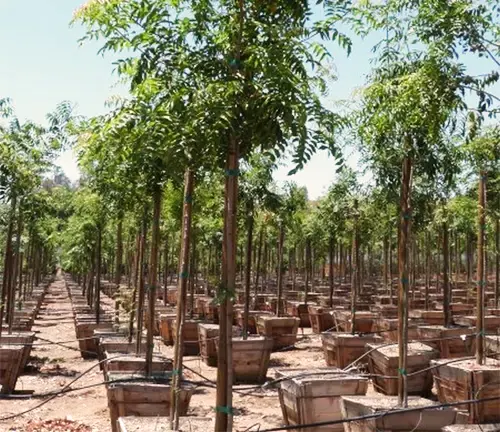
Care
Chinese Pistache trees are generally low-maintenance, requiring minimal care once established. Regular watering during the first few years promotes healthy root development, but they become more drought-tolerant as they mature. Mulching around the base of the tree helps retain soil moisture and suppresses weeds. Pruning is primarily done to maintain shape and remove dead or damaged branches.
Benefits
The Chinese Pistache tree offers numerous benefits for homeowners and the environment. Its attractive fall foliage enhances the visual appeal of any landscape, making it a popular choice for ornamental purposes. The shade provided by its broad canopy can help cool outdoor spaces and reduce energy costs during hot summers. Additionally, this tree is known for its resilience, adapting well to different soil conditions and weather extremes.
Disadvantage
One potential drawback of Chinese Pistache trees is their size. Given their mature height and spread, they may not be suitable for small yards or confined spaces. It’s crucial to consider the available space and the tree’s ultimate size when planting.
Invasive
Chinese Pistache trees are not considered invasive in most regions. However, it’s always prudent to check with local authorities or invasive species lists to ensure they are suitable for your specific area.
Lifespan
Chinese Pistache trees have a long lifespan, often living for several decades. With proper care, they can thrive for 50 years or more.
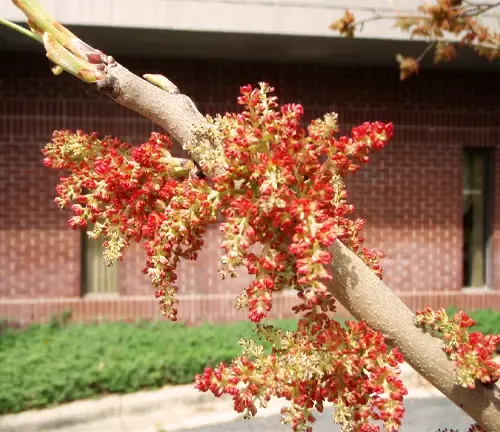
Edible or Not
The fruit of the Chinese Pistache tree is technically edible, but it is not commonly consumed by humans due to its strong, resinous flavor. However, some birds and wildlife species may enjoy feasting on the fruits.
Name Origin
The name “Pistacia” is derived from the Greek word “pistake,” meaning “pistachio nut.” It refers to the close botanical relationship between the Chinese Pistache tree and the pistachio tree (Pistacia vera). The term “chinensis” indicates its origin in China.
Varieties
There are several cultivars of the Chinese Pistache tree available, including ‘Keith Davey,’ ‘Red Push,’ and ‘Keith Davey,’ each with slight variations in growth habit, fall color, and overall size. These variations allow gardeners to choose the most suitable option for their specific landscape requirements.
Pruning
Pruning of Chinese Pistache trees is generally done during the dormant season, preferably in late winter or early spring before new growth emerges. It is advisable to prune selectively, focusing on removing dead or crossing branches, as excessive pruning can hinder their natural form and reduce fall color intensity.
Propagating
Chinese Pistache trees can be propagated through various methods, including seeds, cuttings, and grafting. However, growing them from seeds may result in variations in fall color and other traits. Therefore, it is often recommended to obtain nursery-grown plants for consistent and desirable characteristics.
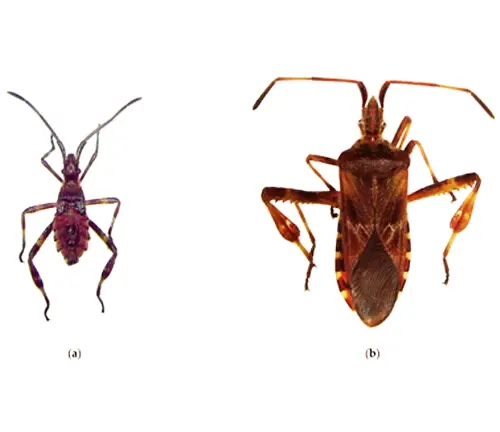
Common Pests & Diseases
Chinese Pistache trees are generally resistant to pests and diseases. However, they can occasionally be affected by aphids, spider mites, or scale insects. Proper monitoring, regular maintenance, and addressing any pest issues promptly can help keep the tree healthy.
Fun Facts:
- Chinese Pistache trees have been widely planted in urban areas due to their ability to withstand pollution and thrive in challenging environments.
- The wood of the Chinese Pistache tree is highly valued for its durability, making it suitable for furniture, flooring, and veneer production.
- The vibrant red dye extracted from the heartwood of the Chinese Pistache tree has been traditionally used in Chinese lacquerware.
Frequently Asked Questions:
Q: Can I grow a Chinese Pistache tree in a container?
A: While it is possible to grow a Chinese Pistache tree in a container initially, keep in mind that it will eventually outgrow the container and require transplantation into the ground to support its mature size.
Q: Do Chinese Pistache trees attract bees and butterflies?
A: Yes, the nectar-rich flowers of Chinese Pistache trees attract pollinators such as bees and butterflies, contributing to the overall biodiversity of your garden.
Q: How often should I water a newly planted Chinese Pistache tree?
A: Newly planted Chinese Pistache trees should be watered regularly, providing enough moisture to keep the soil evenly moist. As they establish, they become more drought-tolerant and require less frequent watering.
Q: Can I eat the fruit of the Chinese Pistache tree?
A: While the fruit of the Chinese Pistache tree is technically edible, it is not commonly consumed due to its strong flavor. However, birds and wildlife species may enjoy feasting on the fruits.
Q: Are Chinese Pistache trees suitable for coastal regions?
A: Chinese Pistache trees can tolerate a moderate amount of salt spray, making them suitable for coastal regions with some protection from strong winds.
The Chinese Pistache tree is a remarkable addition to any landscape, offering a vibrant autumn spectacle, resilience, and minimal maintenance requirements. With its numerous benefits and captivating features, this tree continues to charm both nature enthusiasts and gardeners seeking to enhance the beauty of their surroundings.


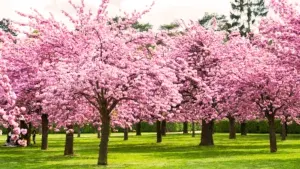

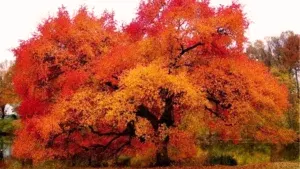
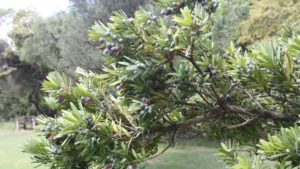
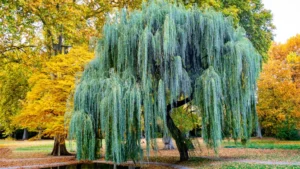
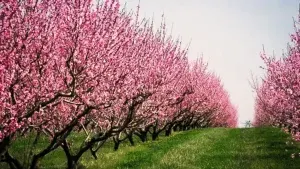
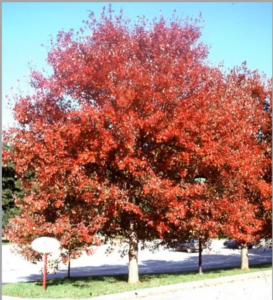
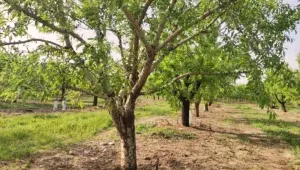

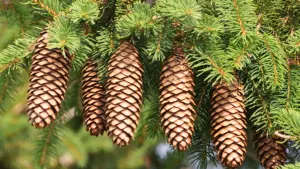
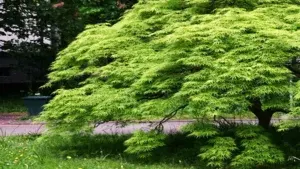

Leave your comment